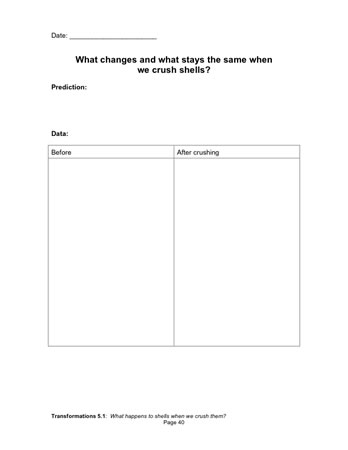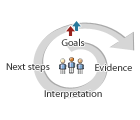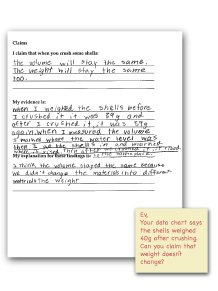What happens to shells when we crush them?
Plan Investigation 5.1
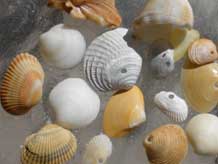
Broken rocks … weathered cliffs … eroded riverbanks … dynamited roadbeds. Earth materials can change — that's obvious; indeed, children can observe such changes with their own eyes. What is less obvious is that despite all these physical changes there remains a finite and constant amount of matter on Earth — and in the Universe.
Formative Assessment
Available online at inquiryproject.terc.edu
In this investigation students are introduced to the idea of conservation of matter through a classroom activity that mimics the long-term effects of weathering. After recording information about a handful of shells, including their weight and volume, students crush the shells underfoot. As they examine the crushed pieces, students record what has changed and what has remained the same.
By the end of the investigation students will see that while the size and shape of the shell pieces have changed, the weight and volume remain the same. They consider whether this is likely to be true for transformations of other earth materials.
Learning Goals
- Understand that when earth materials are transformed, some properties remain the same while other properties change
- Consider whether weathering causes earth materials to disappear
| Sequence of experiences | ||
|---|---|---|
| 1. Ask the question | All Class | 5 Mins |
| 2. Predict what will happen | Small Groups | 15 Mins |
| 3. Collect data and check predictions | Pairs | 15 Mins |
| 4. Make Meaning | Discussion | 10 Mins |
Materials and Preparation
For the class:
- Post the investigation question in a place where all students can see it.
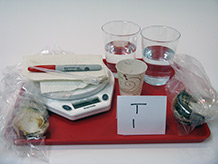
For each tray:
- 2 sandwich bags, each filled with approximately 50 grams of shells
- 4 additional sandwich bags
- 2 20oz cups approximately half full of water
- 1 3oz cup of water
- 1 fine-tip permanent marker
- 1 digital scale
- 1 pipette
- 4 paper towels
Concept Cartoon

The Additive Property Concept Cartoon is typically used as a formative assessment at the end of this investigation.
Can students use data to support a claim about what changes and what stays the same when you crush some shells and provide a possible explanation?
Look at students’ predictions and reasoning in the Crushing Shells notebook page for evidence. Then look at their data, claims, and explanations.
To interpret the work, ask yourself:
- Are claims backed up by recorded data?
- Are the results the same or different from the prediction?
- Does the explanation include the idea that the material (shell) was the same after crushing and that no new material was added or taken away?
A next step could be to ask, “Do you think the result would be the same if we used a different material, such as rocks, leaves, wood, etc.?”


